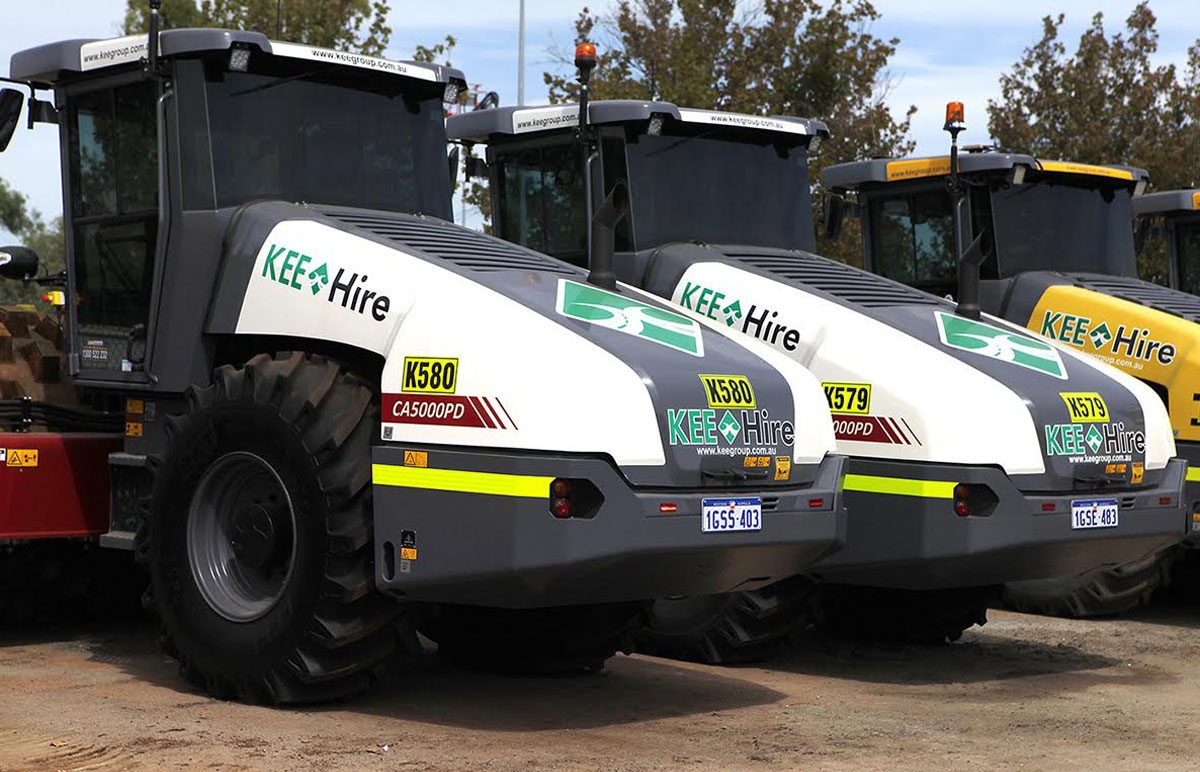
Compact Roller Maintenance: What Project Managers Must Know
Nearly all construction sites need stable ground, with the soil compressed and free from underground air pockets. To make this work, builders need compaction rollers. Today’s rollers are leagues away from the horse or steam-powered kinds of the past. Whether you have a pad foot, smooth drum, or multi-tyred roller, here are a few things you should know about its maintenance.
What Can Each Type of Roller Do?
Smooth drum rollers are for crushing, compacting, and finishing material. It is best for static rolling or when the site cannot have ground vibration. Smooth drums also produce consistent surfaces with compacting.
Meanwhile, a sheep’s foot or pad foot roller is best for kneading, crushing, and drying materials with high water content. Use it on granular and cohesive soils, which are prone to air voids and water retention.
Finally, multi-tyred rollers are best for creating a dense base structure. These rollers generate vertical pressure and horizontal force, helping smooth over the stress fractures from other rollers.
What to Check During Machine Maintenance
Before the day’s work, do a quick walk around the roller. Doing this allows you to check for leaks, loose wiring, or anything that could be amiss. Ensure that the electrical components are working well.
Go over the warning beacons, backup alarms, headlights, the centre joint, and the parking brake as well. It helps to have a checklist for this purpose. Here are more things to note.
1. The Roller Drum
Check for dings or grime on the surface—damaged or dirty drums cause imperfections on the mat and surface. Since the drum is the most used part of the roller, you have to check its oil levels regularly; neglecting this can cause the bearings to get worn down quickly.
2. The Engine’s Fluid Levels
Check the engine oil, lubricant, and other fluids to ensure the engine performs optimally. Compaction rollers, whether smooth, pad foot, or multi-tyred, have maintenance decals on the machine that indicate the level of fluids and lubricants it has.
3. The Water System
Ensure that your roller is functioning well by maintaining the water system. The tank should have clean water for lubricating the drum; otherwise, the asphalt will stick to it and clog the system. Check the water filter as well to ensure that the water has no particles.
Ensure that the nozzles spray evenly and keep the compactor consistent. A nozzle can clog or crack, and a tank could have algae or calcium buildup, so regularly cleaning these is a must.
4. The Drum Scrapers
A drum scraper is responsible for holding water to the drum and ensuring it’s adequately lubricated. If you don’t ensure proper lubrication on your drum scraper, you will lose water between the drum and the scraper. Consequently, the asphalt will start clinging to the edges.
Before starting work, make sure the drum scrapers are appropriately adjusted. Retract the scraper, so it does not touch the drum if you’re using the roller for an extended period, or keep the water on them.
5. The Air Filters and Hydraulic System
Keep the engine from overheating and generating too much exhaust by ensuring that the filter moves air the way it should. When it gets too dirty, replace it instead of trying to clean it.
Also, regularly check the hydraulic oil levels inside the engine. As much as possible, you must change it after 1,000 to 2,000 work hours. If the oil is dark or full of grime, it needs changing right away.
6. The Shock Mounts
Replace torn or failing shock mounts. These rubber parts isolate the drum’s vibration from the operator and direct its energy from the drum to the mat. Regular use causes cracks or tears to this rubber, so ensure that you monitor the mounts on your machine.
What to Do at the End of the Day
Reduce the likelihood of condensation in your tank by fueling up the roller at the end of the day. Also, give the cab glass a wipe-over to keep it ready for the next workday. Finally, always keep the roller locked and secured when not in use. Doing this prevents theft and vandalism.
Conclusion
Compaction rollers are vital to mid-sized and large construction projects. These machines have plenty of components that need regular care and maintenance. Small businesses that don’t have the time or resources to devote to upkeep can turn to roller hire companies for their needs.
Trust KEE Hire to pave the way for your project’s success. We are your roller hire partner in Perth, Albany, and Port Hedland, striving to maintain top-notch service to our clients. Learn more about the KEE difference today—contact us for enquiries!



Leave a Comment